Here’s a strange one: buying magazine subscriptions on eBay is surprisingly inexpensive, and it seems to really work. New subs or renewals, there’s a lot of money to be saved.

I had always used sites like magazines.com for my subscriptions; they’re generally much cheaper than going directly through the magazine’s renewal service, and generally easier too, since you can go online, do four different renewals in one transaction, pay by credit card, and be totally done.
But my cousin heard about a better way: eBay.
We’ve been speculating as to why this occurs, but like many oddities on eBay, we couldn’t really explain it. His theory is that since magazines basically don’t make their money on subscriptions but on ads, they want to raise their paid subscriber counts, thus getting more in ad revenue. So this is another way to get new subscribers (that’s the older term for “eyeballs” apparently).
Here’s an example: at magazines.com, The New Yorker is $47/year. On eBay, I can find that for about $24 (here’s a link, but it’s a live search, so you may find different prices when you try it). And here’s the worst par: on newyorker.com, the one year costs $39.95, which makes me feel like a real dolt for ever using magazines.com.
I took the plunge and set up a renewal. The company I selected had tens of thousands of good feedback – all from mag subscriptions, at least as far as I could tell. Saved some money . . .
Yesterday, a beautiful Sunday, we took a family bike ride down the Ballona Creek path.
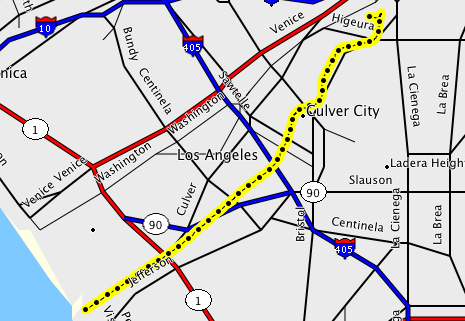
For a ride in the center of Los Angeles, I highly recommend it. The ride really feels like it’s from another world.
To begin with, there are virtually no stops along the way: no streets to cross, curbs to come down, nothing. It’s just seven miles of gentle riding from Culver City to the beach, just below Marina Del Rey.
Next, being next to the creek means that you’re riding below grade, most of the time. So there’s no noise from traffic and horns and industry. There are no SUVs weaving wildly. There are just people, and some wildlife. And the creek, which, while confined to a concrete basin, actually has a nice, almost-natural quality, especially as it grows into a full-blown tidal estuary towards the end.
Access:
We parked on National Boulevard in Culver City, just where National hits Jefferson and ends. On the north side of National, just east of the park with the baseball diamond, is a ramp leading down to the top of the bike path. From there, just ride about seven miles and you’ll be at the beach!
The marathon I ran has been constantly in my mind.
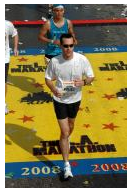
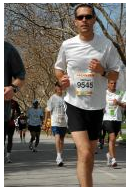
Here are more thoughts I’ve had:
Healthier Food During – I’ve got to figure out how to eat more fruit during the marathon, and less of the chemical energy substances. I had a banana, and that felt pretty good. I understand that many athletes want to spare their gut from having to work to get calories from the food fast, but there must be some fruits that are so close to these chemical mixtures that I could substitute oranges and bananas for GU.
Be More Competitive – If I do this again, I’d like to beat more of these people. So Oprah is the obvious candidate (she beat me by 20 seconds) but George W. is way ahead of me. I ran a half-marathon in just under two hours, so I figure I should be able to do a full one in under four, with a lot more training. In many ways, while I was able to finish this, I really didn’t train as hard as I should have, and definitely not as hard as I could have.
Deal With the Nonsense – There were several categories of people who drove me nuts during this run.
Probably the biggest group was the iPod users. I’m all for iPods, and I use an iPod when I run, generally. But iPod users have a tendency to stop running, or to slow down dramatically, when adjusting their settings. If this is necessary, fine, just pick a good spot, see if anyone is behind you, and work your way toward the side.
Like the iPod users, the cell phone callers really didn’t pay attention to their fellow marathoners. Just like in cars, these people are oblivious to the world around them. I didn’t bring a cell phone on the run – and I never do for runs. I just don’t think it’s necessary. Call me old-fashioned.
Ah, the beepers! Not pagers, but beepers, like metronomes. At first, when I heard one, I thought a truck was backing up. These are used to set people on an even pace, and to keep them running at the right speed. I use my Garmin Forerunner for this (in a very different way, of course) so I understand the need to monitor your speed and progress. But the beeping is heard by everyone in a 25 foot radius. Have you ever tried to run at your own pace, while a beeper is rhythmically beeping at a different pace? Save these gizmos for practice runs, my friends. Don’t plague the rest of us with this!
And then the walkers. Again, I’m totally with you. Walking is better than stopping. I’m happy to say that I didn’t walk, but I was on the verge several times. But when you walk, you need to get out of the middle of the pack. Move over to the side, and let the runners through. Walking in the middle of the road just makes it harder for everyone else who is still running.
As I cut off one guy at around mile 24, I realized how hard it is to take other people’s needs into account. You are so focused on the punishment your body is going through, that’s all you can think about. But I did manage to apologize to this guy for cutting him off – and he was nice enough to say something like, “Yeah, it’s amazing how everything at this point can totally piss you off, right?” He read my mind.
When I first saw one of these in the forums I administer, I thought, “Cool. Someone’s really taking the time to put up a nice post!” But I soon realized that this was just another Google link game. They put up a nice post in your forums, with links and keywords to suit their needs.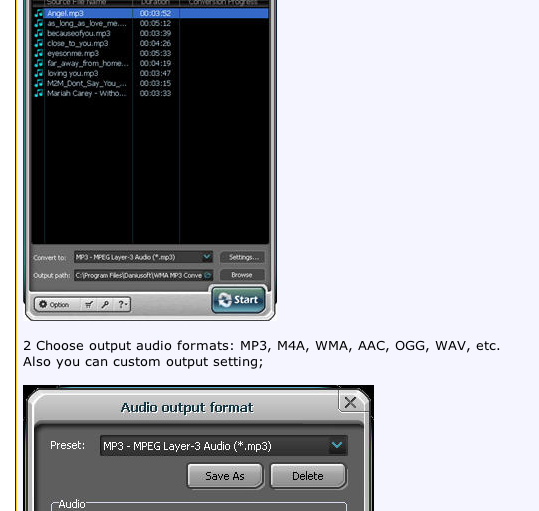
They’re generally along the lines of “Convert YouTube Video to work on your iPhone” or something similar, and the text is littered with links to revenue-producing sites (sorry my screenshot isn’t the greatest).
Anyway, if you administer forums, and you see posts like this, DELETE THEM! I get about one a week, and I use Captcha and everything for registration. These guys are working hard, so it must be paying off for them. Stop the nonsense!
That was really my goal: to finish. And so I did. And I think I’ve gotten it out of my system. Maybe I’ll do it again sometime, but my guess is that it’ll be a long time, and maybe I’ll do some half-marathons every now and then.

I’ve had a lot of thoughts about the marathon along the way, many during training, and many more during the event. So here goes:
The hard part about my experiences here is that I’ve only done one marathon, so I can only speak about what I think worked – I have no control marathon to see what might have happened if I planned or ran differently. But I’m fairly sure I know what things did and didn’t help me out.
I did the carbo-starving then the carbo-loading. Hard to know if that helped, but I’m actually guessing it did. I had more energy late in the race than I typically do on longer runs. I also didn’t exercise at all the day before.
We drove to Hollywood and Highland and parked there. Then we took the subway one stop to Universal, and followed the huge, huge crowd to the starting line. I’m actually surprised to say that we crossed the starting line about three minutes after the gun. With so many people in the crowd, I would have guessed it would take ten to fifteen minutes to get across the line. But the field was pretty wide, and people really started moving as soon as they crossed.
I ran with my friend Sam, and our best move, as recommended by many, was to keep the place slow in the beginning – ideally no faster than we’d want our average to be. We were both wearing Garmin Forerunners, so we could each tell at a glance how fast we were moving. And we definitely had the temptation out of the starting line to get going fast. We kept it pretty reasonable up the first hill on Cahuenga. But coming down the hill, we had to slow down a bit. That’s hard; on a downhill early in the race, to go slow feels pretty counter-intuitive. But we did, and we think it helped. We did go faster during that part than probably any other part of the run, but slower than we could have.
The course wound through familiar territory including Hollywood and then Hancock Park. We saw some friends we knew and scored a banana. Then we turned basically south, and went under the 10 freeway. That was where I started to have my first doubts. I was sorry that I did the easy part of the run (the first part) where I knew the lay of the land; now I would be running in new terrain from here on, essentially.
That’s really what it was down there for me – new terrain. Frankly, there’s not much of a reason for me to be in that part of town ever. I’m a little surprised that they want to drag the runners through there. We have so many great parts of town to cover – the beach, Venice, Santa Monica, Beverly Hills, Griffith Park, etc. But maybe they need to stay in the LA city limits the whole time, or maybe they just can’t close streets in those parts of LA.
So hitting the halfway mark was pretty uneventful. I was slowly eating my GUs. And throwing the used containers on the street, along with my used water cups, and anything else I was done with. I feel pretty guilty doing that, but I do know that someone is going to come by to clean it all up behind me. Still, it’s no different than littering.
At one point, I realized that it was getting hotter, and I took off my hat. Immediately I knew I had to keep it off, so I waited until no one was beside me, and chucked it to the curb. As luck would have it, a homeless man was on the sidewalk nearby and started screaming at me for throwing it and leaving it there. This, amid the cups other runners were dropping everywhere.
On some of the streets in this part of town, the crowd thinned a bit. Really, overall, the crowd cheering us on was pretty amazing. But here in parts you’d go 50 feet with no person, and no music. In a way, it was peaceful. And then there were some boosters making the most of the quiet. I remember vividly a woman walking toward the runners down the sidewalk shouting about how hard we were working and what a great thing we were doing and how envious she was. It was really quite nice – she boosted my spirits.
Amazingly, the crowd on the sidelines and the volunteers were unbelievably supportive. They’d read your name off your bib to cheer you on, tell you that you look great, and tell you they were impressed. They really were there just to support you, and that alone is a great booster.
But the volunteers made the run work. I probably took water or gel or Gatorade or something from 30 people, all told. These people are standing there for hours with outstretched arms offering you everything from pretzels to bananas to oranges to water to candy – I even think I heard one group offering beer. Some of these people were organized by the marathon group, but many others were just out in front of their houses with bottles or water they bought. I’m pretty sure I couldn’t have run this far without them.
At mile 19, nearing downtown, Sprint had runners with cell phones. So I teamed up with one, and she ran alongside me as I tried to call my wife. My brain wasn’t working too well, so I first dialed my own cell phone – and didn’t realize until I got my voicemail announcement. I did talk to my wife just as she was getting on the subway to meet me at the end.
Starting in the early 20s, with the bridge uphill over the LA river to Boyle Heights, I began to feel significantly weaker. Sam insisted that I keep replenishing my sugar, which I did, and I’m sure that helped. From about mile 21, I had a GU or something similar at least every two miles, maybe more. I went to the bathroom and I realized that I needed to drink more water, so I took a cup from every group from there on. But even so, I just began to feel totally wiped.
I don’t think I “bonked;” I think I was just getting worn down. But I pushed on, and as the miles started to hit 23 and 24, I saw the end in sight. Crossing back over the LA river had a good psychological impact; I felt like I was in the home stretch. The last few miles did drag on – partly out of anticipation, and partly out of exhaustion.
After mile 25, we saw our families and friends – a wonderful feeling! We barely even slowed (we were moving pretty slowly by this point) because we just wanted to finish. Just beyond them was the mile 26 banner. We ran past that, turned the corner, and saw the finish line. We sped up just a tiny bit and crossed.
And then I could barely walk. Stopping and starting is hard, but until you finish, you know you want to get to the end. Once you hit the end and stop, you feel like nothing can make you move again. We moved very, very slowly.
In the end, my time was 4:29:35. I’m really ecstatic that I did it in under 4:30. I didn’t really expect to, although I was hoping for it.
Next time: more preparation, with more long, long runs. If there is a next time . . .
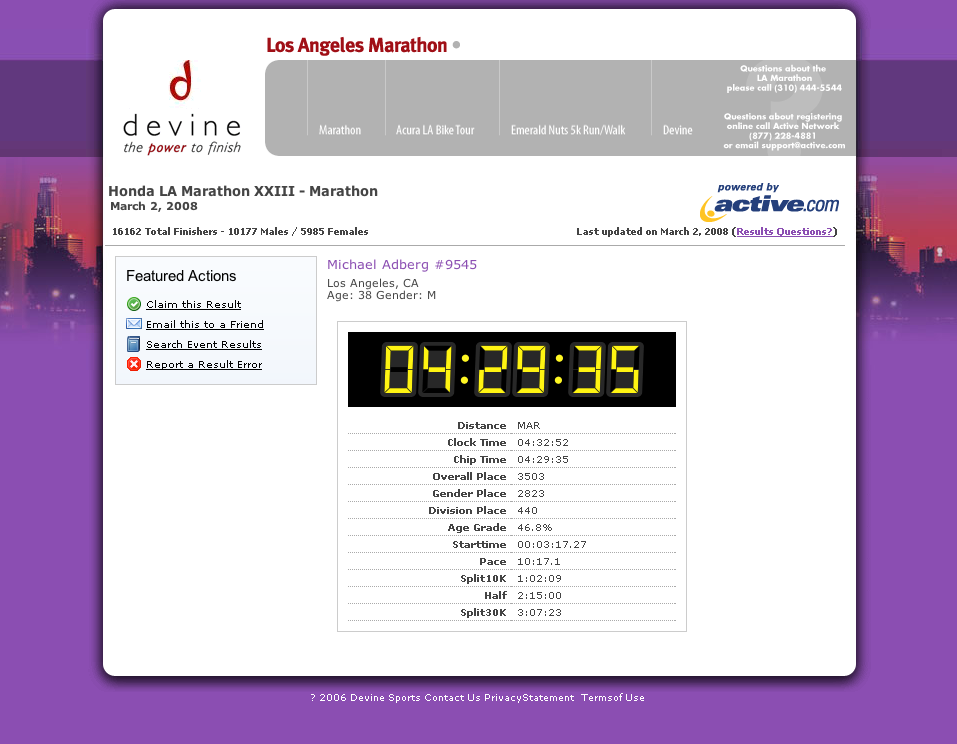
We have a whole set of All-Clad pots and pans, and I like them very much. They basically seem to last forever – except the non-stick ones. The coating doesn’t exactly wear off, it just becomes ineffective after a while. In our case, it became so ineffective that our non-sticks were stickier than regular pans.
So I emailed All-Clad. I had sent a pan back once before many years ago, and I wanted to do that again, based on their lifetime warranty. They sent me back a big form reply, with complete cleaning instructions.
Hidden deep in the email, was this:
“We will be happy to provide a warranty evaluation for replacement. Please write a brief note that explains the problem that you are experiencing with the item(s). Include in the note your name and return address. Please also mark the outside of the package clearly with the number XXX-YYY. Package the note and the item together and return them to . . .”
So I sent in my pans – four of them – for ‘evaluation.’ That was six weeks ago. I forgot all about them until one day we remarked on how great it was to have extra space in the kitchen cabinets. We had totally stopped using these pans since they were so ineffective. I made a mental note to follow up with All-Clad, then promptly forgot again.
Today, a box from All-Clad arrived:

Four new pans, each in a new box. Screaming for eBay . . .
So take advantage of those lifetime warranties!
I just got an email telling me, among other things, that:
“Making a refund?
Refunds are quick and easy. Learn more”
On the “learn more” page, you get this info:

Hmm . . . seems like an awful lot of steps to me. This is one area where PayPal falls really short. Especially in comparison to a true merchant account or Google Checkout, they make refunds really time consuming. Far, far, from easy.
Saul Hansell has an article in the New York Times blog about Google driving away Postini resellers. Fair point – offer a service to the end-user cheaper than through a middleman, and you get rid of the middleman. It’s the old ‘disintermediation’ that the internet has been know for since the beginning.
I wrote about my switch to Postini earlier. I wouldn’t have done it if Google hadn’t started offering the service directly – partly for cost reasons, and partly because I didn’t need anyone in the middle of my relationship with Google.
A friend recently told me about a new book, Artisan Bread in Five Minutes a Day. The idea behind the book is to use some new techniques to make great bread at home that has some of the flavor depths of traditional aged, fermented dough. Bread made by just mixing ingredients and baking really doesn’t have the complex flavors of flavor made of either aged starter (like sourdoughs) or at least fermented dough (letting the dough sit for a while to evolve and brew its own flavors).
My friend was making bread in the mornings for her kids to take to school, and easily popping out fresh loaves. I thought I should give it a try. So I bought the book, and mixed up a batch of dough.
Mixing the dough was easy. I just put the ingredients in the KitchenAid and mixed. Then I put the dough in a plastic tub, let it sit for a few hours, and put it in the fridge, as instructed.
I made my first bread the next day.

I’ve got to say, it looked great. Nice smells, good looking crust. Very artisanal. But it really had no flavor. Not to say we didn’t gobble it down before it had a chance to cool – nothing is better than warm bread from the oven, and we had some President butter on hand. But there was really nothing special about the bread beyond it being homemade and hot.
So I let the dough sit. The authors tell you that the dough gets better with age, up to two weeks. And that stands to reason. So on day four, I pulled out another batch of dough, made my “gluten cloak” (you have to read the book to get that). And I baked. But this time I didn’t get enough rise at all – despite letting it rise for the prescribed 40 minutes.

Better flavor this time, but with very little rise, it was pretty dense. This wasn’t really working for slicing for sandwiches, which was the dinner plan, but doughy slices spread with pesto worked out pretty well.
Given the lack of rise but the good crust of the last version, on day 6 I made smaller, flat loaves. We had eaten at a restaurant in Paris last year called Cosi that made flat loaves for sandwiches. Great concept: less bread, but good fresh bread, with more filling. And since the bread was largely crust, it really held the sandwiches together. The bread was close in shape and form to a pita, but with a great flavor, and a bit tougher and having more bite than pita.
So I aimed for that, and I got pretty close:

I basically sliced these around the edges for three-quarters of the circumference, and stuffed them with the favorite fillings for each family member.
Now, tonight, two weeks after I first mixed up the dough, I wanted some flatbreads with toppings. I made four. I added a cup of whole wheat flour to what was left of the dough, and some more water. I kneaded a bit, and let the dough rise for about an hour in four parts. Then I rolled each out flat.
The kids basically turned into pretty traditional pizzas. The adults got bacon, gruyere, frisee, and eggs. After they came out of the oven, they needed some serious salt, but this was definitely the best meal from the dough.

More?
Yes, I’m definitely going to go for another round. I’ll use most or all whole wheat dough next time. and I won’t even try a bread on the second day – not enough flavor. I need to figure out if maybe my yeast was bad; something was wrong with the rising of the dough on days after the first. So I’ll probably get a new jar.
But this method definitely has potential. If I can get this to work, it’ll be much less work than a sourdough starter (which has always intimidated me).
The authors have more information on their website.
